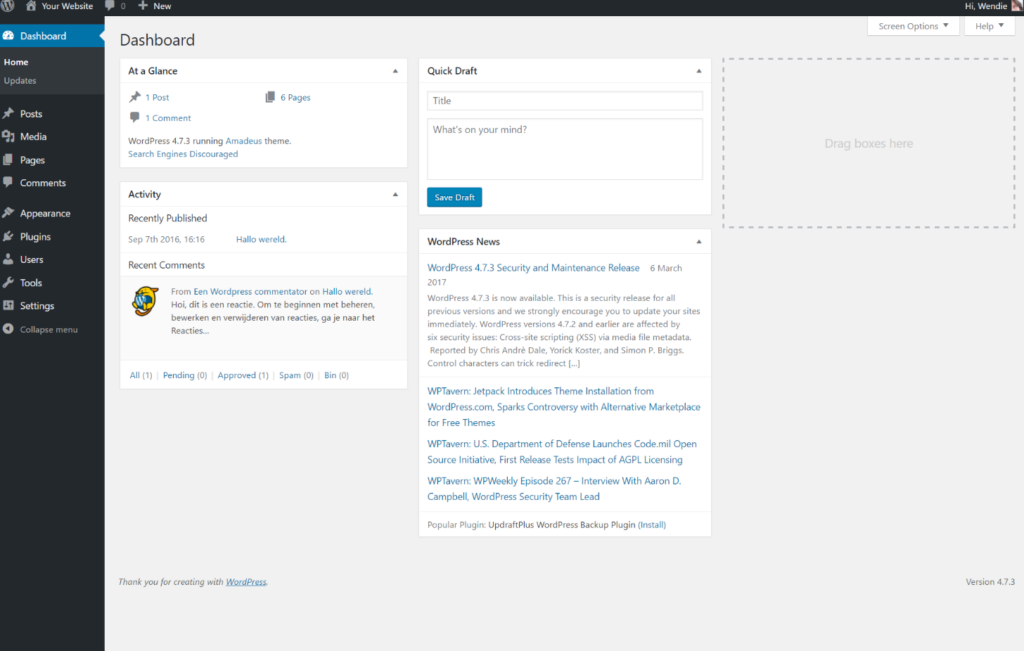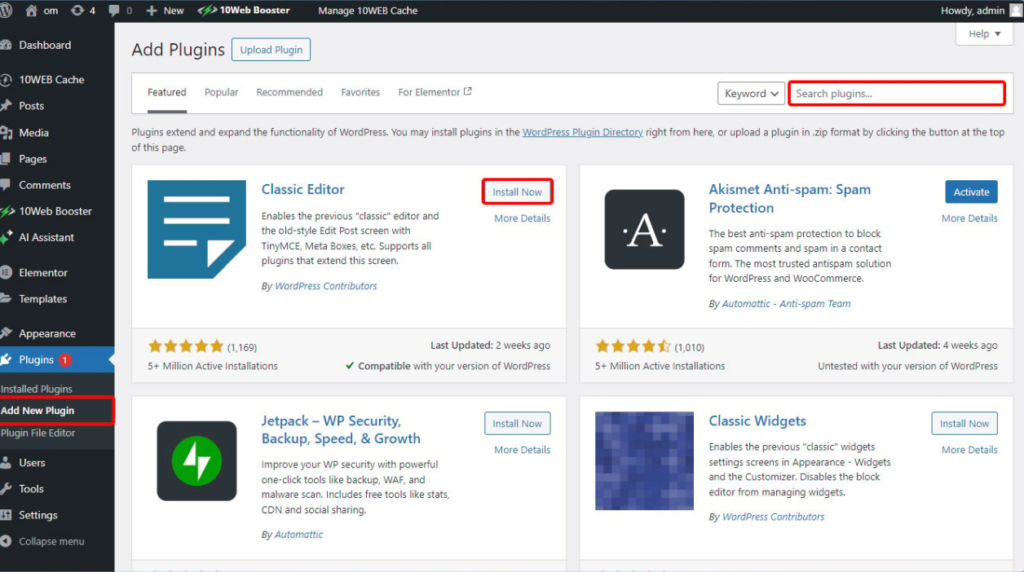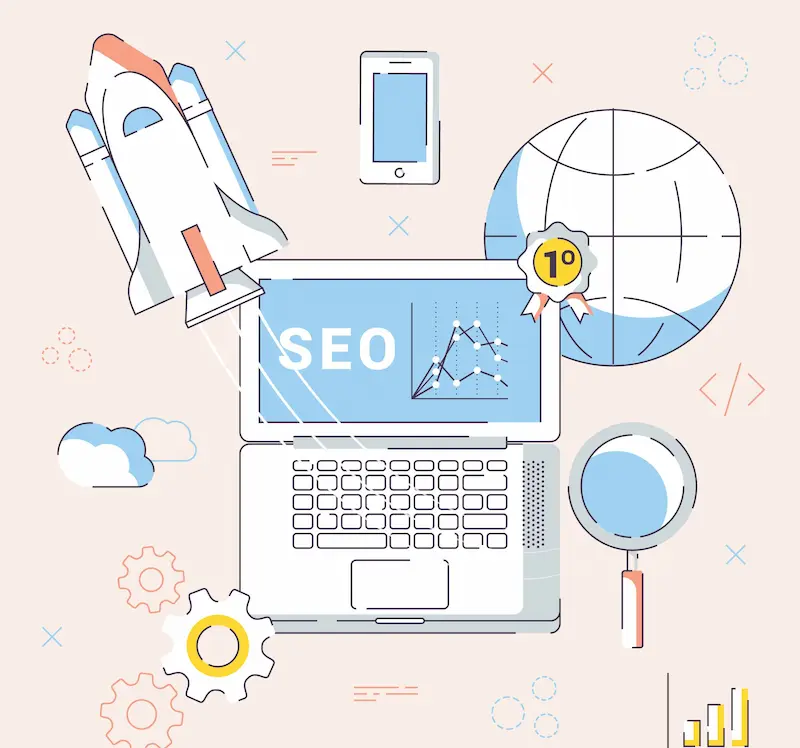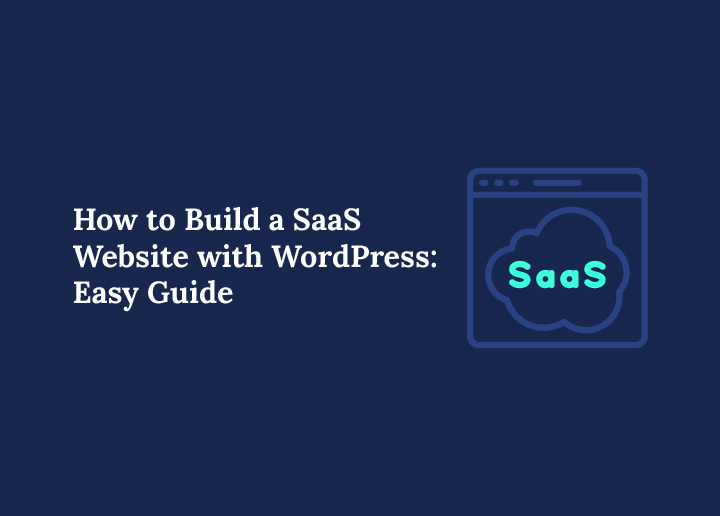Did you know how to build a SaaS website with WordPress? As one of the world’s most popular content management systems (CMS), WordPress is incredibly user-friendly, flexible, and highly customizable, making it an ideal choice for creating a powerful SaaS site.
Software as a Service (SaaS) isn’t just a buzzword, it’s a game-changing business model transforming how we access and use software. By delivering applications over the internet, SaaS spares us from the hassle of installations and constant maintenance. But what’s essential for any SaaS business to succeed? A responsive well-designed website.
In this guide, we’ll dive into why WordPress is an excellent fit for building a SaaS website and break down the steps to make it happen.
What to Plan Before You Build a Saas Website with WordPress
Before you begin to build your SaaS website, it’s crucial to start with some groundwork. Proper preparation sets a strong foundation for a website that resonates with your audience and stands out in the competitive SaaS market.

Here’s what to focus on:
- Research Your Market & Define Your Audience: Researching your market and understanding your audience can make a huge difference. Take the time to figure out who your ideal customers are, what industries they’re in, and what challenges they face. This way, you can design a website that feels like it’s speaking directly to them, making it easier for them to see the value in your product.
- Craft a Strong Value Proposition: Identify your audience’s core challenges and clearly convey how your SaaS product provides a unique solution. Instead of just listing features, emphasize the real benefits users will experience, showing why your product is the best choice.
- Develop User Personas: Create user personas representing your ideal customers, giving insights into their needs, goals, and user intent. Use these personas to shape your design and content, creating a website experience that feels relevant and personalized.
Also Know About: Best White Label Platforms for SaaS Companies
Ready to Build Your SaaS Website? Let’s Make it Happen on WordPress
Bring your SaaS idea to life with our custom WordPress development services get get things started.
Conducting Competitive Analysis for Your SaaS on WordPress
Before investing time in development, it is essential to analyze competitors in the SaaS market. A competitive analysis shows where your website can differentiate and helps you avoid common mistakes that other software companies make.
This process is about studying market demands, industry trends, and customer pain points to create a SaaS platform that resonates with your target audience.
Here are key steps to follow:
- Identify Direct Competitors: Look at SaaS applications that solve the same problem as your product. Check their landing pages, templates, and user interface to understand how they communicate with potential customers.
- Evaluate Strengths and Weaknesses: Consider user experience, pricing models, security measures, and support systems. Identify where they excel and where customers leave negative feedback.
- Benchmark Marketing Efforts: Analyze their SEO tools, website builder features, social media presence, and email campaigns. See how they attract leads and where your SaaS website can gain an advantage.
- Spot Opportunities for Innovation: Find gaps in their software development approach. Maybe they lack integration of AI tools, strong customer service, or scalability features. Filling those gaps can set your SaaS platform apart.
This analysis will give you a clear roadmap for building a SaaS website that functions well and strategically positions your brand against competitors.
How to Build a Saas Website with WordPress: Simple Steps
In WordPress website development, it’s essential to understand the importance of having a strong and efficient platform base for building a Saas website. And what’s better than WordPress, the most powerful and flexible CMS platform out there?
WordPress has customization options and powerful plugins, making it an excellent choice for startups and established businesses. In this guide, we’ll take you through the technical process of building a high-performance SaaS website with WordPress.
Step 1: Define Your Technical Requirements
Before you start building, it’s crucial to nail down the technical requirements for your SaaS site. Think through the must-have functionalities to keep your site running smoothly and meeting user expectations.
This includes features like user authentication for secure logins, subscription management for billing, and API integrations to connect with other tools or platforms users might need.
It’s also vital to ensure your website can handle high traffic volumes, especially as your user base grows, and manage large datasets efficiently. Don’t forget to prioritize security by implementing strong measures to protect user data from potential breaches. This is essential for maintaining trust with your customers.
Step 2: Choose a Reliable Hosting Provider
Choosing a dependable hosting provider is one of the most critical decisions you’ll make for your website’s performance and reliability. Managed WordPress hosting providers offer optimized environments explicitly tailored to WordPress, which means better speed, support, and security.
Choose a provider that fits your budget and offers the level of service you’ll need as your site scales.
Step 3: WordPress Installation

Most hosting providers make WordPress installation a breeze with one-click setups. But if you prefer a more hands-on approach, you can install WordPress manually:
- Download WordPress from WordPress.
- Upload the files to your server via FTP.
- Set up a MySQL database through your hosting control panel.
- Navigate to your domain, and you’ll be prompted to complete the installation process.
Learn More: How to Install WordPress on Windows 11
Step 4: Select a SaaS-Compatible Theme
The right theme sets the tone for your SaaS site’s design and functionality. Look for a theme designed specifically for SaaS websites, typically including customizable templates and compatibility with essential plugins. A few recommended options:
- Astra: Lightweight and customizable, Astra is popular for its speed and versatility.
- Divi: With a powerful visual builder, Divi allows for creative and dynamic page designs.
- SaaSly: Tailored specifically for SaaS applications, with templates designed to showcase software features.
You can easily install your chosen theme via the WordPress dashboard under Appearance → Themes → Add New or upload it directly to the /wp-content/themes/ directory.
Read More: Best Elementor SaaS WordPress Themes
Step 5: Install and Configure Essential Plugins

Boost your site’s functionality with some essential plugins that enhance the SaaS experience:
- Elementor or Beaver Builder for advanced page-building
- WooCommerce and WooCommerce Subscriptions for managing subscription services
- WPForms or Gravity Forms for user-friendly form creation
- MonsterInsights to track site analytics with Google Analytics
- AIOSEO for optimizing your site’s visibility on search engines
Install these plugins via the WordPress dashboard under Plugins → Add New, or upload them to /wp-content/plugins/.
Step 6: Design and Develop Core Pages
It’s time to bring your SaaS website to life by designing key pages. Use your theme and page builder plugins to create engaging and functional pages:
- Design an attention-grabbing homepage that showcases your SaaS product’s benefits and key features.
- Use custom post types to organize your product’s features and create advanced layouts.
- Configure WooCommerce to clearly display pricing tiers and integrate subscription options for easy sign-ups.
- Build a secure contact form with WPForms or Gravity Forms to make it easy for users to reach out.
These pages form your SaaS website’s backbone, making them visually appealing and easy to navigate.
Step 7: Implement Payment Processing
A seamless payment process is essential for SaaS websites. Use WooCommerce to handle payments and subscriptions:
- Install WooCommerce from Plugins → Add New, search for WooCommerce, and click Install.
- Go to WooCommerce → Settings → Payments and enable payment gateways like Stripe or PayPal.
- Install the WooCommerce Subscriptions plugin to set up and manage subscription products.
This setup provides a streamlined experience for users, making it easy for them to subscribe and manage payments directly on your site.
Know About: WooCommerce Payment Gateways: Best Payment Gateways for Your Online Store
Step 8: Optimize for SEO
Make sure your site is optimized for search engines using the AIOSEO plugin:

- Install AIOSEO from Plugins → Add New, search for it, and click Install.
- Set up AIOSEO by navigating to SEO → General and following the setup wizard for optimal configuration.
- Use Yoast’s analysis tools to add relevant meta keywords, meta titles, and descriptions to your content.
- Generate an XML Sitemap and submit it to search engines for better indexing.
These steps help boost your visibility in search results, making it easier for potential customers to find your SaaS product.
Read Here: Complete SEO Checklist
Step 9: Perform Comprehensive Testing
Before launching, put your site through a thorough testing process:
- Test all functionalities, including registration, login, and subscription flow, to make sure everything works smoothly.
- Evaluate the user experience to ensure it’s intuitive and user-friendly.
- Use tools like GTmetrix and Google PageSpeed Insights to optimize loading speeds and performance.
- Run a security audit using plugins like iThemes, Wordfence, or Sucuri to safeguard against potential vulnerabilities.
Testing helps you catch any issues before they affect real users, ensuring a smooth experience from day one.
Read Here: Best WordPress Website Testing Tools for Your QA Team
Step 10: Deploy and Monitor
Once everything is ready, it’s time to deploy and keep a close eye on your site’s performance:
- Point your domain to your hosting provider and make your site live for public access.
- Use MonsterInsights to track user behavior and site performance. This will help you understand how visitors are interacting with your content.
- Set up uptime monitoring services or tools like UptimeRobot to ensure your site remains accessible and operational 24/7.
With these steps, your SaaS website will be well-prepared for launch, and monitoring tools will keep it performing optimally as it grows.
Final Reading: Learn to Create a Directory Site Using Elementor
Step 11: Scaling and Performance Optimization
Launching a SaaS website is only the beginning. As your customer base expands and more applications or features are added, scalability and performance optimization become critical for revenue growth and customer satisfaction. Without the right infrastructure, a website can slow down, affecting both user experience and conversions.
To ensure growth without disruption, focus on:
- Caching and CDN Integration: Use caching plugins and a Content Delivery Network to reduce load times across devices and locations. This improves accessibility and overall usability.
- Database and Code Optimization: Clean up unused custom code, streamline CSS and HTML, and remove glitches or bugs that may slow the platform. Efficient software development practices keep your SaaS applications running smoothly.
- Server and Hosting Upgrades: Move from shared hosting to VPS or cloud providers like AWS or Azure when traffic numbers grow. This ensures compliance requirements and performance monitoring are easier to manage.
- Security and Compliance: Implement strong data security measures, including GDPR compliance, encryption, and risk monitoring. A secure platform builds trust and prevents downtime.
- Continuous Testing and Monitoring: Use tools for performance monitoring, uptime checks, and real-time reporting to keep track of traffic, errors, and opportunities for improvement.
By planning for scalability early, SaaS developers and business owners can avoid costly downtime and deliver a reliable customer experience that drives long-term business growth.
Conclusion
Building a SaaS website with WordPress is possible and surprisingly straightforward with the right approach. You can create a powerful, user-friendly site that genuinely supports your business by tapping into WordPress’s flexibility, robust plugins, and tailored themes.
Following each step, from planning your technical needs to fine-tuning for SEO, helps ensure your site is functional and ready to grow alongside your users. With WordPress, you have a reliable foundation to bring your SaaS vision to life and make it a success.
FAQs About Building a Saas Website with WordPress
What is the best website builder for creating a SaaS platform?
WordPress is a top choice because it offers design freedom, SaaS-specific templates, and essential plugins. Unlike custom code heavy solutions, it balances flexibility with ease of use, making it suitable for both developers and business owners.
How can AI tools improve a SaaS website?
AI tools enhance user experience by offering personalized recommendations, smarter customer service chat functions, and improved data security measures. They also help businesses optimize workflows and reduce repetitive tasks.
What landing page elements increase SaaS conversions?
A successful SaaS landing page should include clear CTAs, testimonials, visuals that highlight product features, and concise messaging. Adding SEO tools and performance monitoring helps attract more visitors from search results.
Do I need coding skills to build a SaaS application with WordPress?
Not necessarily. WordPress offers drag-and-drop editors and landing page builders that minimize complexity. However, some custom code may be useful for advanced integrations, APIs, or specialized features.
What are the most important security measures for SaaS applications?
The key steps include user authentication, encryption, compliance with industry standards like GDPR, and continuous monitoring of threats. Strong security ensures customer satisfaction and protects sensitive data across devices.



